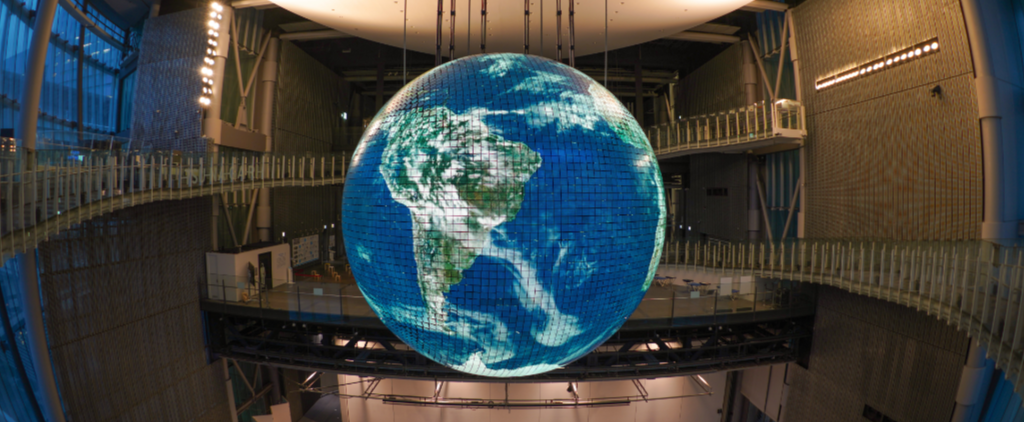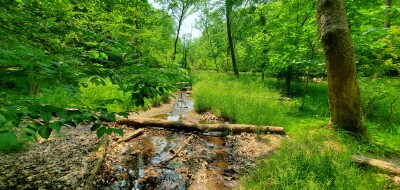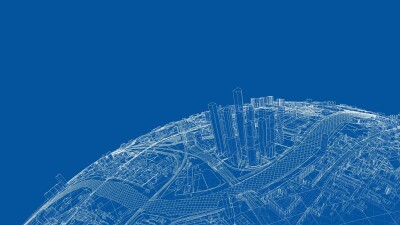Lidar, GIS, and other mapping and geospatial technologies are expanding and growing in a second ‘location revolution. By better understanding the environment, more accurately capturing real-world conditions, and improving data processing, mapping has come a long way.
What’s on the horizon for 2022? Keep a lookout for these geospatial technology trends this year, and explore more by attending Geo Week next month!
1. Hybrid sensors, hybrid methods, hybrid workflows
Imagery and lidar scans both have value, but the growing number of ways that those two data streams are being collected and integrated means opening even more possibilities for geospatial information. Hybrid is the name of the game for 2022, and it’s just getting started.
More sensors now include both lidar and photogrammetry, allowing now only for time savings when both modes are able to be captured during a single flight, but the ability to produce colorized point clouds and other valuable deliverables. in addition to the systems that have both lidar and passive imaging, there are other combinations of sensors that can also make up a hybrid workflow. Topobathymetric lidar, multi-spectral sensors, oblique camera and other specialty lidars can be combined to get the best data in the most efficient manner.
In addition, if captured simultaneously, the image and data processing can be enhanced, as the aerial image data forms the point cloud, digital surface models and 3D meshes that the workflows will output. Lidar can help to correct for narrow situations where occlusion is a problem as the lasers can penetrate better and farther than the imaging may be able to accomplish.
From the manufacturer's side - sensor makers like RIEGL are all-in on the hybrid approach, and many are making versatile sensors that can be put to work on specific tasks, including coastal mapping, forestry management and more.
2. Common data environments and the cloud
Lidar has a long history of innovation, and with each year there are more sensor improvements, new scanning techniques and patterns. What’s been slow to catch up (until now) are new workflows to improve data collection and reduce the time and personnel cost of capturing data.
Like many other complex and large-scale datasets, lidar processing is ripe for disruptive innovation. Distributed computing, the cloud, and common data environments are on the cutting edge of computer processing. So it seems that the next step is for the geosptial industry to figure out the best way to leverage these new technologies for their own benefit. Processing data in the cloud can help with scalability, and reduce the reliance on the single maxed-out piece of hardware back in the office. With on-demand processing models, the cost can also be managed on an as-needed basis, instead of paying for expensive single-seat user licences.
While there are a few companies branching out to specialize in cloud processing of point clouds and other geospatial data, the opportunity still remains for improving those processing workflows.
3. Plugging in to advanced visualization tools
Whether it is looking at elevation models in augmented reality, streaming complex models to team members in real time, or making visualizations more easily accessible for stakeholders, visualization will be a key area of growth in 2022.
One thing that remote work has certainly taught us over the last few years it that sometimes it really helps to visualize what you cannot see in person. The increased reliability of headsets like the Hololens2 and other enterprise-grade headsets entering the market, most smartphones are also capable of some degree of augmented reality. This combination may mean that augmented reality is closest its ever been to having its chance to shine.
For geospatial professionals, that may mean being able to put a 3D terrain model on the table in front of colleagues that are miles away, or to fly through collected aerial data to better investigate an area of interest, or even overlay a model onto the real world.
We've already seen examples where augmented reality has been used to overlay underground utilities underneath city streets, to 'place' a building in its geospatial context and look at how the environment may affect the structure.
More fundamentally, augmented reality may also provide a layer of additional information over the real world which can be useful in any domain. Visualize potential locations, read instructions for training in situ, or simply receive navigational instructions - all can be done in augmented reality.
4. GEO and BIM come together
Where architecture, construction, infrastructure and geospatial meet: GEOBIM. In 2022 these previously siloed areas of development will continue to grow closer, enabling a more complete picture of geospatial and the built world.
The domains of AEC and geospatial information and positioning have existed in parallel but separate paths, making it challenging to get an entire picture of the features of the natural landscape, existing as-built infrastructure and potential future construction sites. Aiming to reduce the chasm between these fields, GEOBIM efforts are helping to bring them closer together.
Last year, Esri introduced GeoBIM, their product to connect location and construction/architecture information into one workflow. By pulling in data from captured data and models, the integration is aimed to help coordination between stakeholders without leaving the same platform.
While the tech is still evolving, workflows from GIS to BIM could eliminate the need to import or re-create data from one system to the other, a problem that has contributed to the inefficiency of design and construction workflows.
5. High priority for infrastructure
The ongoing push towards urbanization, as well as the growing costs of repairing aging infrastructure in the U.S., has put infrastructure in the spotlight for 2022. With some key funding on the way, the demand for geospatial services to prepare for projects is set to increase dramatically.
As a result, mapping of areas of development and ecological concern, including forests and coastlines, will be a high priority, and the sensors that are tuned for capturing urban environments (like the Leica CityMapper-2) will help to capture existing conditions in greater detail than previously possible.
At the 2021 Year in Infrastructure event hosted by Bentley Systems, the theme was 'Futureproofing' - preparing for the climate and political futures as well as building in resiliency to existing infrastructure. The challenge is still in the data collection - we need accurate models and captures of the existing world in order to make the right decisions on how and where to develop it.
If you’re interested in learning more about these advances at Geo Week 2022, use the link below to register or see more of the Geospatial conference sessions here.
Register Now Learn More






